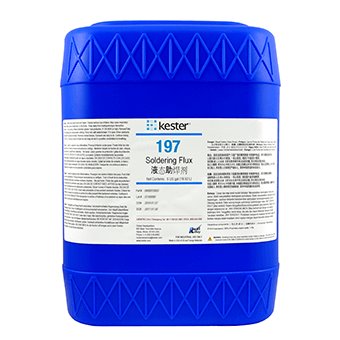

To use it, you’ gently brush the metal with the flame, then with quick short puffs on the sprayer, put the Pripp’s flux on a little at a time. It gives a much finer and more uniform spray than any sprayer bottle I’ve seen, and cannot clog. The best sprayers by far are the cheap little two-tube-with-a-hinge mouth atomizers that ceramics folks sometimes use for applying glazes. You apply it (and this is an important detail) by spraying it on the silver while gently heating the silver up enough so the spray dries on contact, as opposed to hitting as a liquid and bubbling/boiling off. But the trisodium formula seems to be the most common. If you happen to have a chemical supply house around, you can also use disodium or monosodium phosphates.

The substitute doesn’t work for this purpose. TSP brand wall-cleaner no longer contains TSP.) Read the box carefully. Because it’s rather a caustic (though reasonably safe) material, some stores carry a substitute, which may be confusingly labeled. You can usually get it in paint or hardware stores, but be sure it’s actually trisodium phosphate. TSP (trisodium phosphate) is a strong alkaline cleaner often used in cleaning walls and the like before painting. (Borateem is just borax-the little green flecks they put in there too don’t seem to matter). The Borax you can get at the supermarket, in the laundry area. It’s the 3:2:2 ratio that’s important, not the concentration.). Boil to dissolve it (you might have to add a little more water. To make it, you will need: a quart of water, 120 grams boric acid, 80 grams each TSP (trisodium phosphate) and borax. It’s named after Jack Pripp, who taught at Rochester for many years, and is considered one of the fathers of the American metalsmithing community.
Soldering flux substitute how to#
This, by the way, was taught from the first moment we were shown how to light a torch, just to give you an idea of how important and basic a technique Fred felt it was. Fred Fenster at the University of Wisconsin, who proclaimed in that 1972 sophomore class that at other schools people sometimes complained about firescale, but “here at U.W.

I’ve been a gold and silversmith since college, and learned Pripp’s from Prof. Classical silversmiths would often go through several sequences of “burning on” a borax coat before annealing or soldering, but it doesn’t work quite as easily or as well as Pripp’s. Pripp’s flux is a mix you make up yourself, and it works pretty much the same as a borax coat, which is the older and more traditional method. This entry was posted in Cool Stuff, iPad, Open Source Hardware, Tools / Equipment and tagged Charging, eagle cad, iPad, iPhone, iPod, LED, open source, open source hardware, pcb, SMD, surface mount by Jeremy. Happy iCharging! Eagle files are on Github. Not a for sure thing, but I’ll watch the feedback.īelow is a picture of the 2 other boards I did not populate yet, along with the prototype I made the other day. I’m thinking about getting some more made and selling them as kits, partially assembled (the SMD 603 LED and resistor) or fully assembled. They have spring loaded tops, and they are modular, you can form them in any configuration you want! How cool is that?! “But Jeremy? Where do you keep all of those SMD parts?” you ask? Good question, I use these awesome Modular Snap SMD component storage boxes from Adafruit. So I fired up the hot air rework station, grabbed my tweezers, and voila! SMD parts! (I did order some reels of 603 resistors and LED for use in future kits, sorry peeps, no old motherboard parts for you!) I use a good pair of tweezers, and a viewfinder from an old camcorder to inspect my work. Motherboards have a slew of SMD things on them.
Soldering flux substitute Pc#
I got the 603 resistor from an old PC motherboard. (Can you blame me?) Now, 6 years later those tiny 603 blue LED’s come in handy. I had an old cell phone from 2006, and saved the keypad because it lit up blue. I used the same circuit I had in the old post, just added an LED and resistor for a power indicator. Although I do tend to favor 5V 2A supplies from Adafruit. You can’t beat that with a stick! Now, I have a nice little iDevice charger that accepts standard 5 volt power from any standard power supply.

I sent off the files and 2 weeks later, I got three perfect purple PCB’s. Now, the boards I whipped up in a few hours, and had it made from DorkbotPDX service.
Soldering flux substitute full#
(video link, it’s good, you should watch it!) I give her full credit for the circuit. This design is based (and the schematic is almost exact!) off of Ladyada’s Reverse engineering Apple’s secret charging methods. I had a post a while back on charging an iDevice (iPhone, iPad, iPod) and talked about and showed a schematic for the charging circuit.


 0 kommentar(er)
0 kommentar(er)
